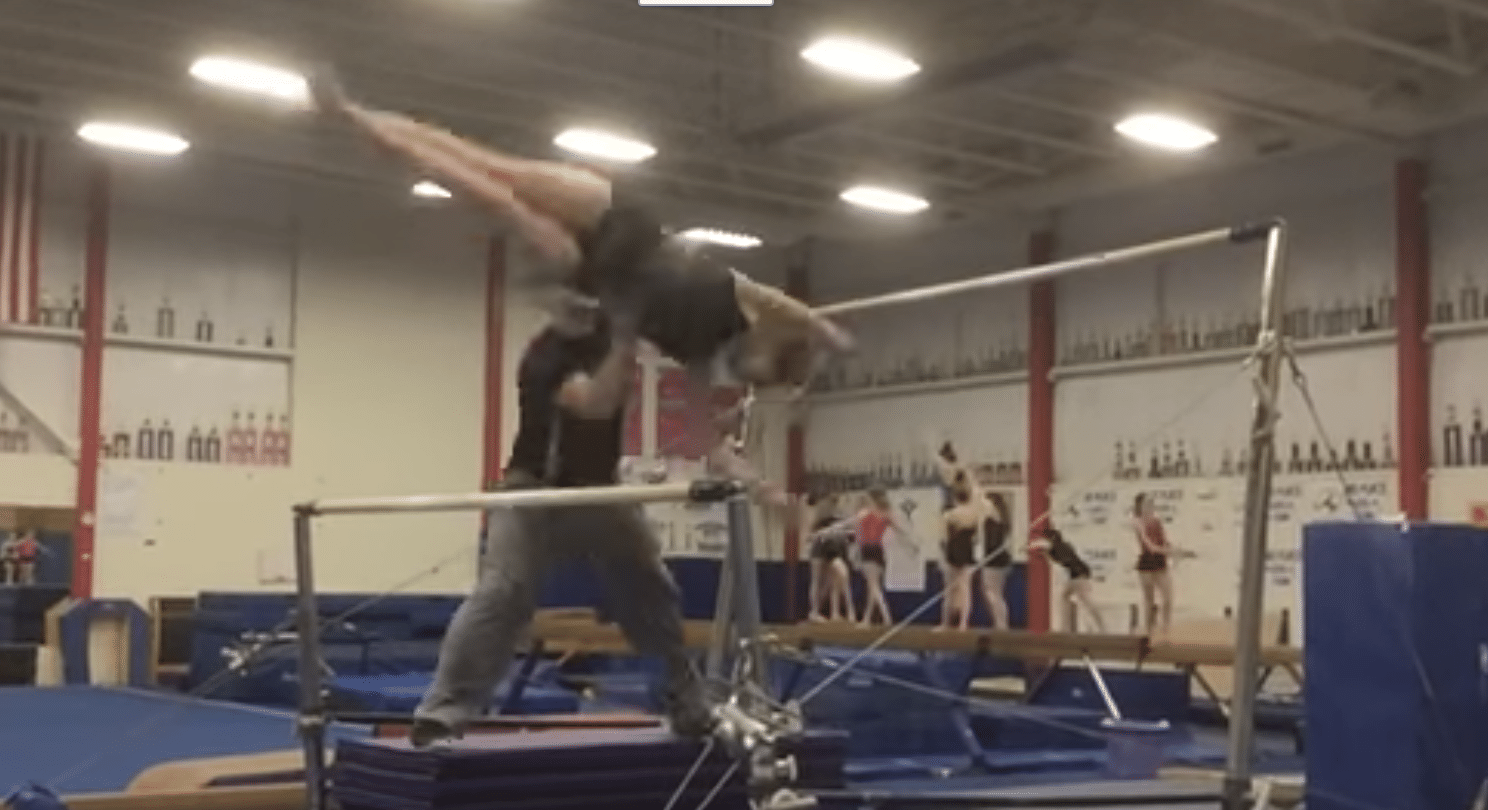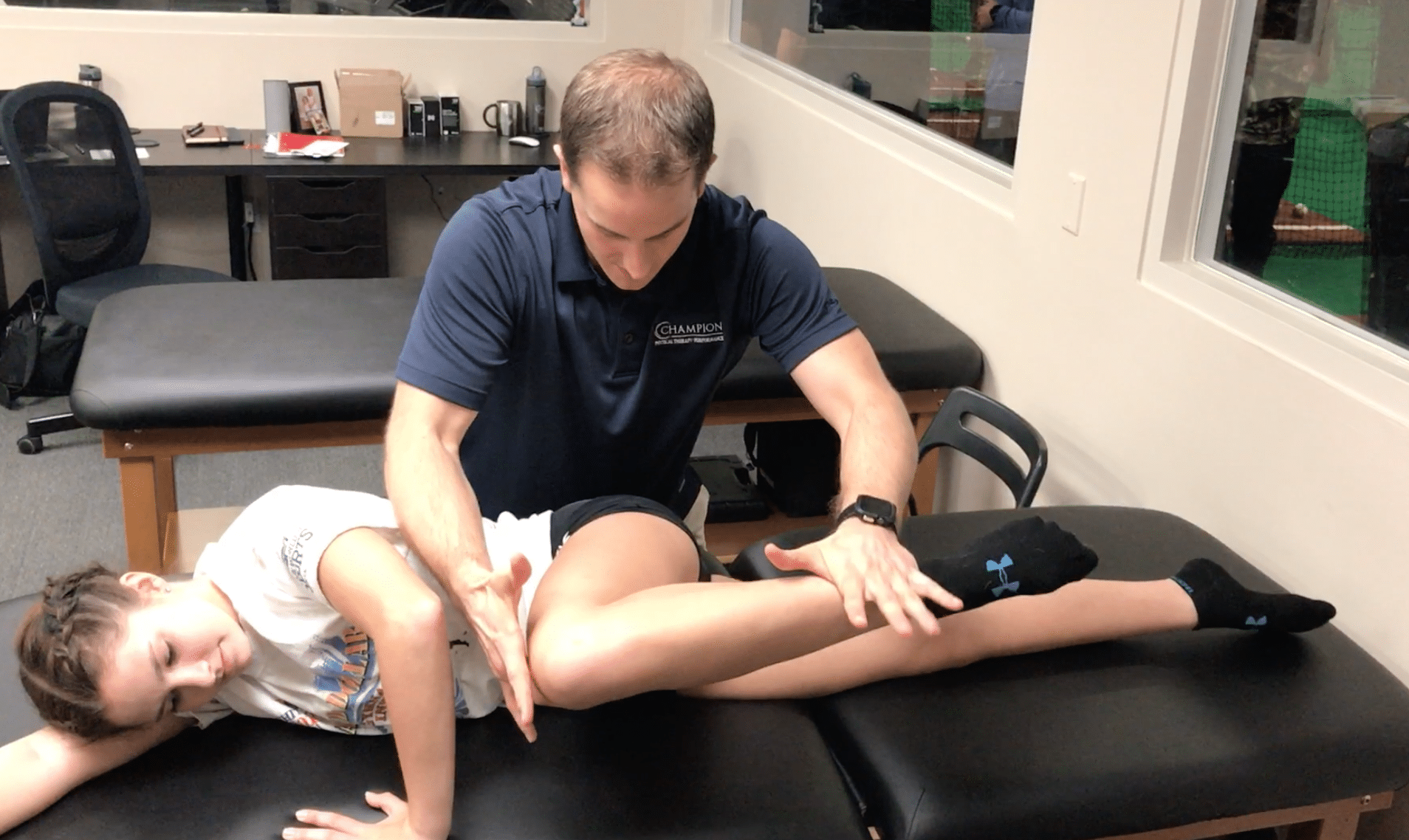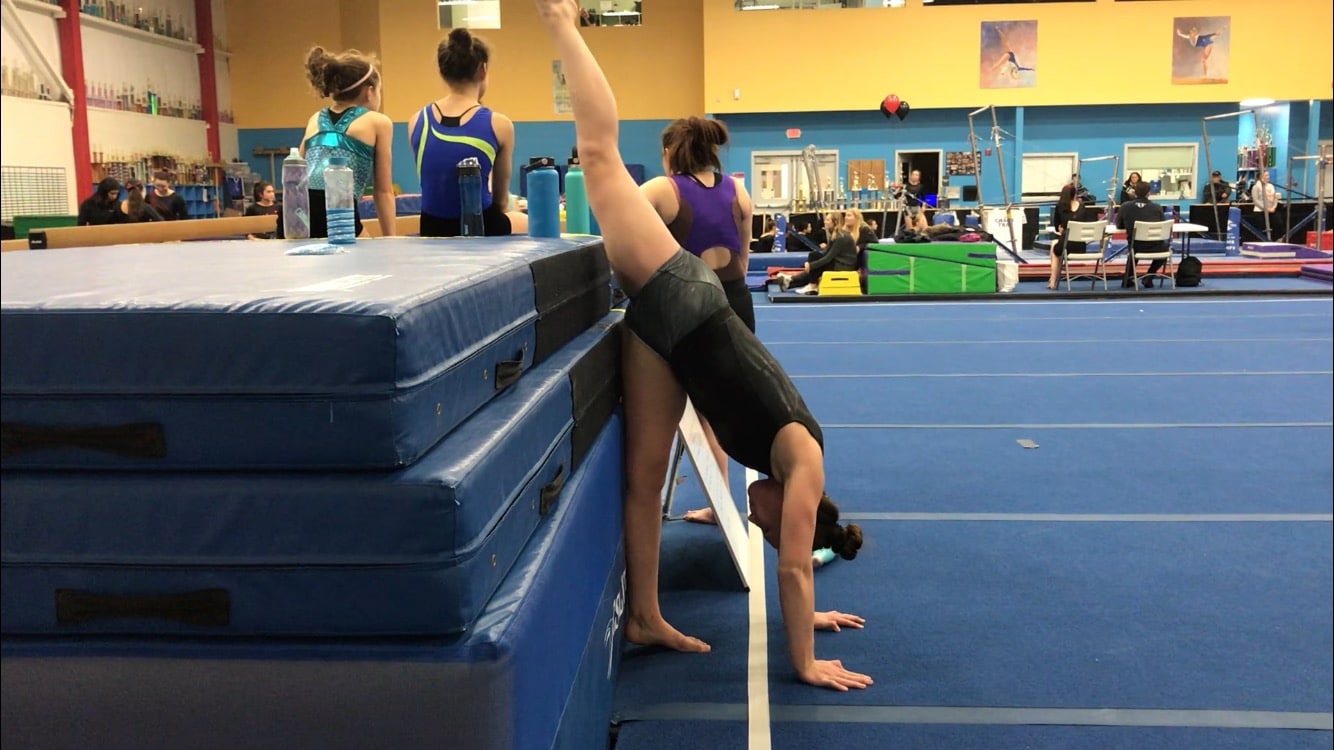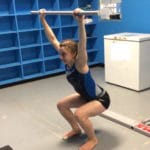Improving Split Mobility and Transferring It To Beam: “Performance Complex” Hip Example
One of the biggest things I see is problematic in terms of performance and injury in gymnastics is when we focus so much on mobility, but then neglect the steps that should come after to change movement. These include drills to add dynamic control to the new range, and drills to re-patterning the skill that the mobility work is intended to help. In my eyes, how you get a gymnast more mobility is not nearly as important as what is done with it after.
Remember before you read more, you can download my free “10 Minute Gymnastics Flexibility Circuits” PDF that offers this complex below in step by step form. It also comes with exercise video walk throughs and printable checklists to use in the gym.
Download My New Free
10 Minute Gymnastics Flexibility Circuits
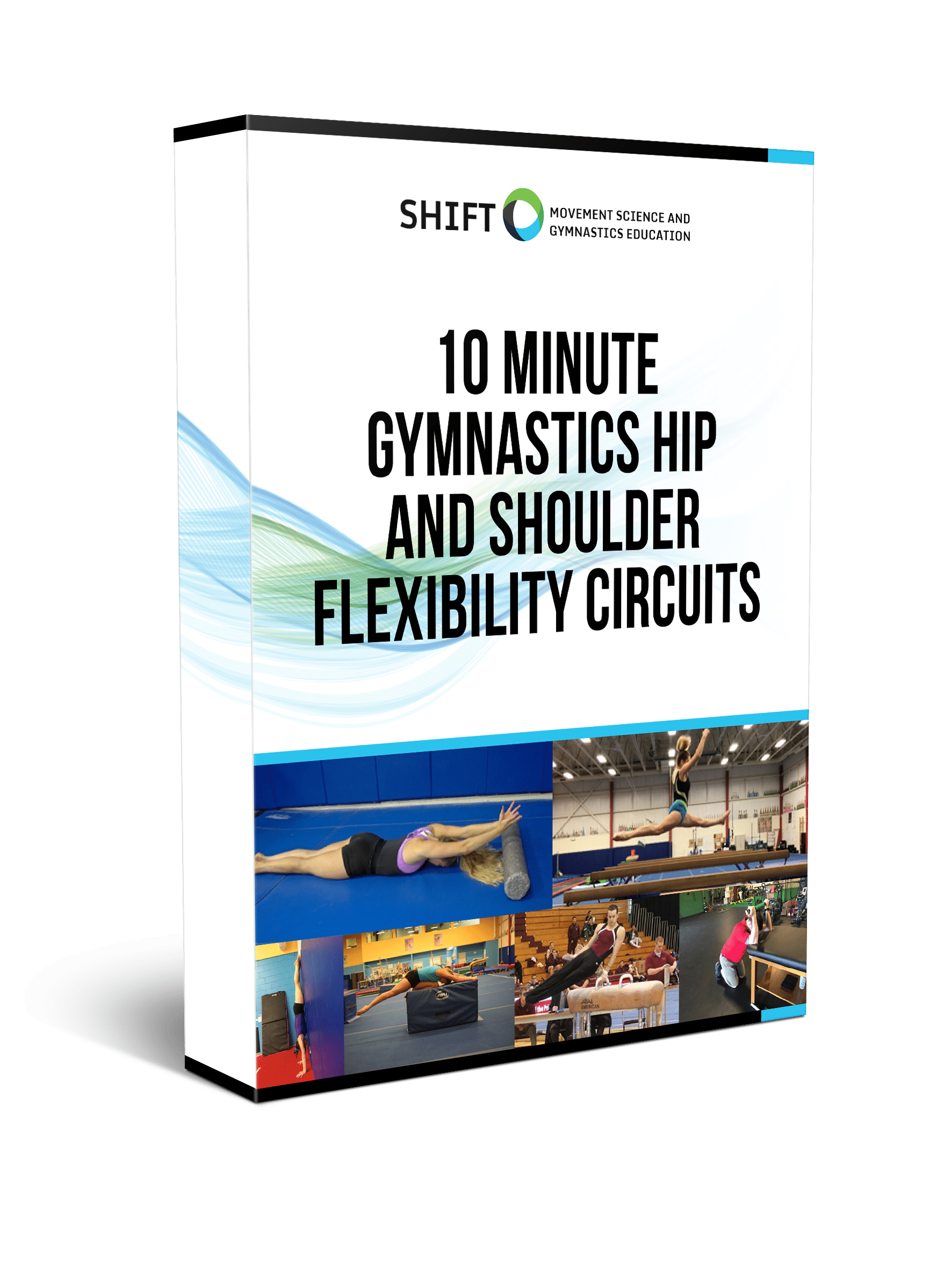
- 4 full hip and shoulder circuits in PDF
- Front splits, straddle splits, handstands and pommel horse/parallel bar flexibility
- Downloadable checklists to use at practice
- Exercise videos for every drill included
When a gymnast gains more motion, especially one who is inherently hypermobile, it’s crucial that dynamic control is established in the newly acquired range. Giving someone a big change in motion they can’t control and then subjecting them to high forces of gymnastics skills can be very risky.
Missing these crucial follow up steps is also one reason as to why I think many mobility changes are unfortunately short lived in gymnasts. If steps aren’t taken to make the changes “stick” in the nervous system and change movement, the increase in motion may only be temporary. This leaves both gymnasts and coaches frustrated as to why they constantly feel the need to stretch.
I want to share an approach to gymnastics skill work I came up with over the last few months and have using in training with some positive results. It is based around the idea above that within a training circuit you have to take someone through a progression from mobility work, all the way training dynamic control in the new range, and ultimately using this change to improve gymnastics skills. Many people refer to these steps after mobility work as “grooving” the new motor pattern. The best term I have come up with so far for this process including the drill progression is a “Performance Complex”. This will be something I teach about when Dr. Eldridge and I team up for some seminars later this year, so I wanted to introduce it and share an example.
Like I noted I think it’s important we make changes in motion (re-testing as we go to make sure there is a change), then immediately follow it up with some progressive control drills in the new range. These progressive control drills may also double as what many coaches call “active flexibility”, and some further increases in range of motion are often seen. The mobility work serves as a window of opportunity, but to take advantage of it you need to build in control then work the skill itself. Here are the steps of the overall Performance Complex system, with an examples for each related to the split mobility progression I will show after.
- Pre-Test a Skill/Pattern For Baseline
- Splits and leap being worked
- Soft Tissue Work and Mobility Drills (If Needed)
- anterior hip
- posterior chain
- medial groin tissue
- Isolated hip mobility drills focused on breathing patterns and utilizing opposing muscles/other body regions to improve motion
- Re-Test Baseline Skill/Pattern to Measure Change
- Split and leap being worked
- Do Local Re-Patterning Drills (at the hip, shoulder, ankle, etc)
- Assisted leg lowering drills (elevated on block to accommodate larger motion needed) x 10
- Do Global Re-Patterning Drills Building In Local Changes
- Hip Extension/Leg Drive Drill on Panel Mat x 10
- Progressively Increase Challenge and Transfer To Gymnastics Drills
- Standing Needle Kicks on Line x 10
- Finish by Actually Performing Skill
- Leap of Jump being worked
Hip Performance Complex Examples
Here is a video I took and edited to show me going through this approach, measuring the change in a gymnast’s split motion as I went along. I did it at the beginning of practice prior to any warm up, All and all, she gained about 4.5″ in her bad side split, she lost the feeling of “tightness” in her back hip/front hamstring, it required no external aggressive stretching or pushing (find some of my thoughts on that concept here and here), and it ended up only taking about 5 minutes. The picture at the end is from 3 hours later to see if changes lasted throughout practice, which for the most part they did. I will update this post when I have a some pictures related to the long term effects of her working on it more.
Here is another video I filmed to demonstrate how I put this into practice as the first chunk of our beam workout. We used 4 lanes for each group, each one having it’s own set of equipment to use. I think we were able to move 20 gymnasts through 2 rounds in about 15 minutes. Sorry if the video numbered steps aren’t exact to the list above, but should be close.
Concluding Thoughts
Based on what I have learned and applied from continuing education, I think this approach helps to tap into the nervous system and also make fast changes in movement/improve gymnastics skills. I think this also helps to make neurological changes in the brain that the gymnast can adapt and hopefully snowball into long lasting effects with good technique in training. I will warn readers, it’s not a magic bullet and doesn’t always work. These are just general suggestions, as a true movement assessment is really the best way to make changes tailored to the athlete. I urge people to think more about the concepts behind the complex, and not so much the specific drills. As I always say this isn’t the case with every gym/coach/gymnast and some people are doing this already, just my thoughts. However after starting to set up some more circuits on this system seems to make drastic changes in movement, demonstrate changes in skill carry over , and many of the gymnasts reported they were happy with the results. The first gymnast above certainly has some more work to be done on her hip mobility so she’s going to continue to do this before practice each day.
One of the coaches at our gym did make the important note that a general event warm up should precede this if you will be doing lots of skill work. As I noted, the first video was on a gymnast who hadn’t warmed up, so I didn’t take her into real skills. However if you are planning to do lots of skills at the end of the complex, doing a 10 minute warm up prior and then this complex for 20 minutes might be best. Then it can still leave time for additional work at the end if you have a 45 or 60 minute event rotation.
I will openly say that I have put this together as a fusion application to the works of people including Perry Nickelston, Gray Cook, Erson Religioso, Charlie Weingroff, Mike Reinold, and more. I want to make sure credit goes where it’s due, and I also highly suggest readers check their work out to learn more. I’ve have spent time putting together more examples for this type of approach including overhead shoulder/bars complexes, spine & core/tumbling complexed, wrist/handstand complexes, and more. It’s all part of the philosophy I have found useful hope to teach people more about down the road in our seminars. I hope this gets people thinking and is helpful.
– Dr. Dave
P.S. I know I broke up the Impact Based Ankle Pain Case for this post, but it actually all ties together. Next week I’ll finish Part 2 of that series, then in Part 3 I’m going to offer some tips on ankle mobility that are based off this system of thinking I have put into training. Be on the lookout for it next few weeks!


